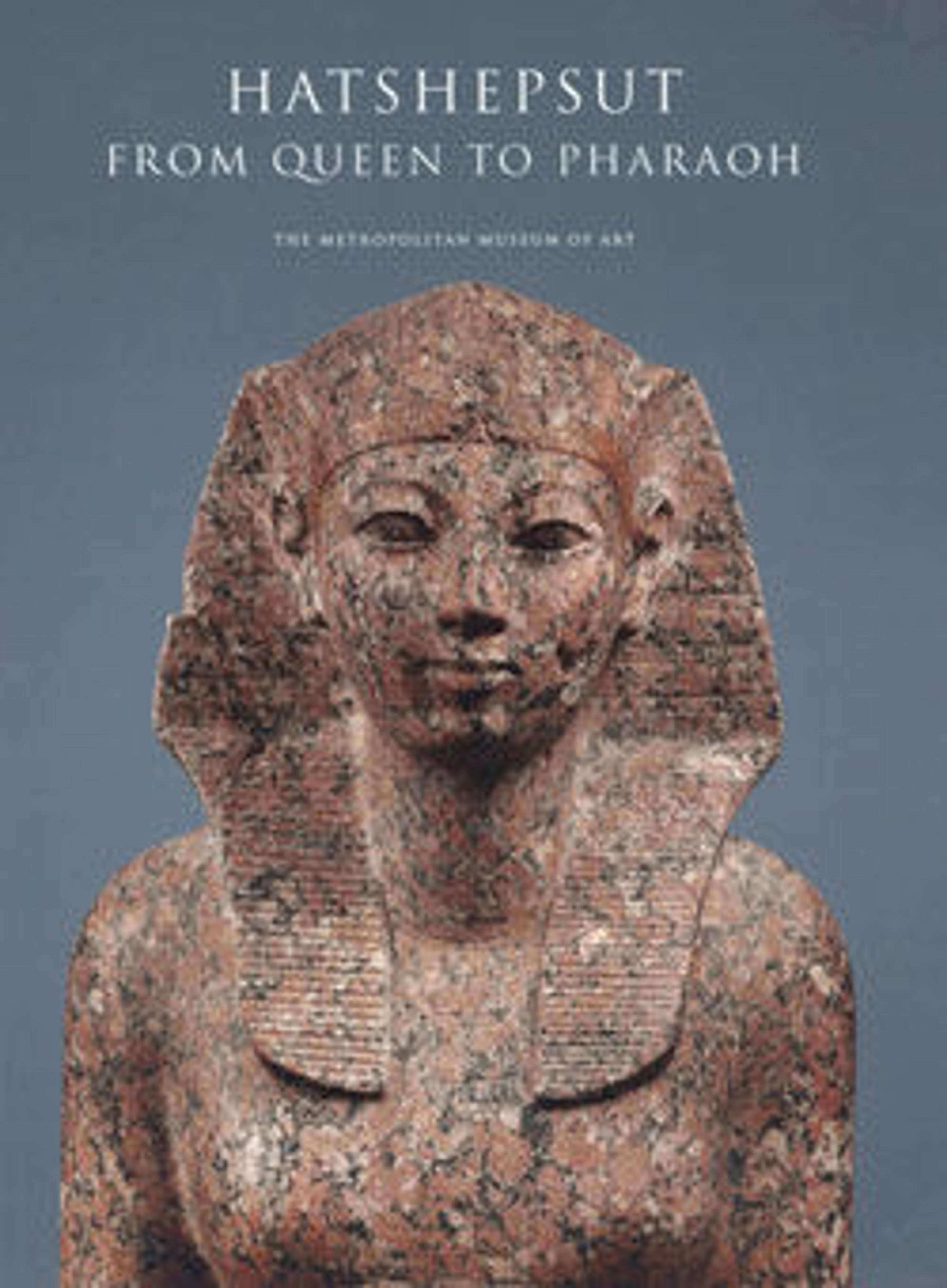Hatshepsut Wearing the khat Headdress
This statue is one of only two that portray Hatshepsut as a woman. Here she is shown wearing a sheath dress and a khat–headcloth. She also wears a broad collar necklace, cuff bracelets, and wide anklets. Suspended around her neck on a string of tubular beads is the same enigmatic amulet seen on two of the colossal kneeling statues in the collection (29.3.1, 30.3.2). The seated pose indicates that Hatshepsut is the recipient of cult offerings, so the statue was probably placed in one of the chapels on the middle or upper terrace of the temple.
Although represented as a woman, she is also clearly identified as ruler. Incised into the stone beneath her feet are nine bows, representing the symbolic enemies of Egypt and the inscriptions on either side of the throne record her royal titulary, but here the titles and epithets are written with feminine endings. In the text next to her right leg she is called the "Good Goddess, Lady of the Two Lands." On the other side of the throne she is the "Daughter of Re."
Although represented as a woman, she is also clearly identified as ruler. Incised into the stone beneath her feet are nine bows, representing the symbolic enemies of Egypt and the inscriptions on either side of the throne record her royal titulary, but here the titles and epithets are written with feminine endings. In the text next to her right leg she is called the "Good Goddess, Lady of the Two Lands." On the other side of the throne she is the "Daughter of Re."
Artwork Details
- Title:Hatshepsut Wearing the khat Headdress
- Period:New Kingdom
- Dynasty:Dynasty 18
- Reign:Joint reign of Hatshepsut and Thutmose III
- Date:ca. 1479–1458 B.C.
- Geography:From Egypt, Upper Egypt, Thebes, Deir el-Bahri, Senenmut Quarry and temple, lower court, MMA excavations, 1928–30
- Medium:Diorite
- Dimensions:H. 150 cm (59 1/16 in); w. 38 cm (14 15/16 in); d. 80 cm (31 1/2 in)
- Credit Line:Rogers Fund, 1930
- Object Number:30.3.3
- Curatorial Department: Egyptian Art
More Artwork
Research Resources
The Met provides unparalleled resources for research and welcomes an international community of students and scholars. The Met's Open Access API is where creators and researchers can connect to the The Met collection. Open Access data and public domain images are available for unrestricted commercial and noncommercial use without permission or fee.
To request images under copyright and other restrictions, please use this Image Request form.
Feedback
We continue to research and examine historical and cultural context for objects in The Met collection. If you have comments or questions about this object record, please contact us using the form below. The Museum looks forward to receiving your comments.
